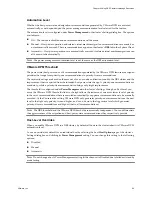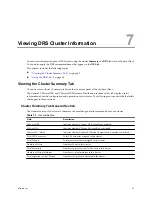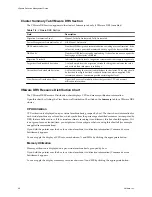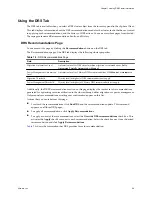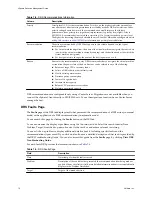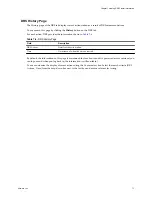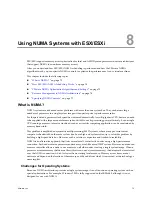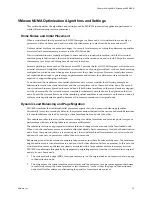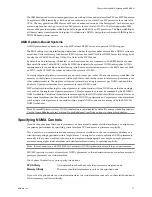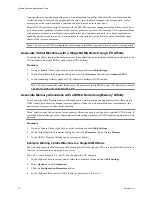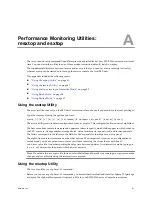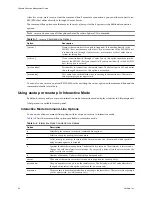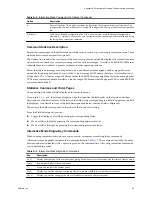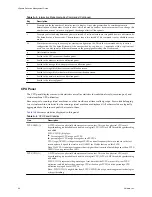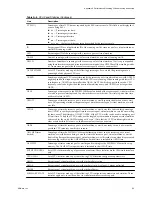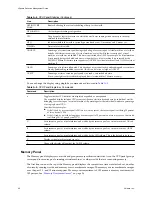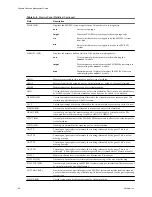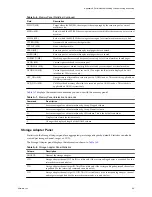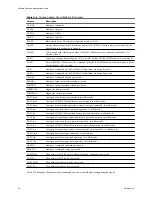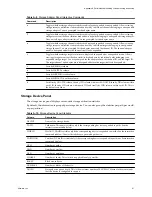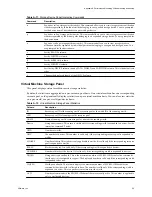
An administrator can also manually move a virtual machine to another node after the virtual machine has
started running. In this case, the page migration rate of the virtual machine must be set manually, so that
memory from the virtual machine’s previous node can be moved to its new node.
Manual NUMA placement might interfere with the ESX/ESXi resource management algorithms, which try to
give each virtual machine a fair share of the system’s processor resources. For example, if ten virtual machines
with processor-intensive workloads are manually placed on one node, and only two virtual machines are
manually placed on another node, it is impossible for the system to give all twelve virtual machines equal
shares of the system’s resources.
N
OTE
You can view NUMA configuration information in the Memory panel of the
resxtop
(or
esxtop
) utility.
Associate Virtual Machines with a Single NUMA Node Using CPU Affinity
You might be able to improve the performance of the applications on a virtual machine by associating it to the
CPU numbers on a single NUMA node (manual CPU affinity).
Procedure
1
Using a vSphere Client, right-click a virtual machine and select Edit Settings.
2
In the Virtual Machine Properties dialog box, select the Resources tab and select Advanced CPU.
3
In the Scheduling Affinity panel, set CPU affinity for different NUMA nodes.
N
OTE
You must manually select the boxes for all processors in the NUMA node. CPU affinity is specified
on a per-processor, not on a per-node, basis.
Associate Memory Allocations with a NUMA Node Using Memory Affinity
You can specify that all future memory allocations on a virtual machine use pages associated with a single
NUMA node (also known as manual memory affinity). When the virtual machine uses local memory, the
performance improves on that virtual machine.
N
OTE
Specify nodes to be used for future memory allocations only if you have also specified CPU affinity. If
you make manual changes only to the memory affinity settings, automatic NUMA rebalancing does not work
properly.
Procedure
1
Using a vSphere Client, right-click a virtual machine and select Edit Settings.
2
In the Virtual Machine Properties dialog box, select the Resources tab, and select Memory.
3
In the NUMA Memory Affinity panel, set memory affinity.
Example: Binding a Virtual Machine to a Single NUMA Node
The following example illustrates manually binding the last four physical CPUs to a single NUMA node for a
two-way virtual machine on an eight-way server.
The CPUs—for example, 4, 5, 6, and 7—are the physical CPU numbers.
1
In the vSphere Client inventory panel, select the virtual machine and select Edit Settings.
2
Select Options and click Advanced.
3
Click the Configuration Parameters button.
4
In the vSphere Client, turn on CPU affinity for processors 4, 5, 6, and 7.
vSphere Resource Management Guide
78
VMware, Inc.
Summary of Contents for ESX 4.0
Page 6: ...vSphere Resource Management Guide 6 VMware Inc...
Page 44: ...vSphere Resource Management Guide 44 VMware Inc...
Page 52: ...vSphere Resource Management Guide 52 VMware Inc...
Page 72: ...vSphere Resource Management Guide 72 VMware Inc...
Page 80: ...vSphere Resource Management Guide 80 VMware Inc...


